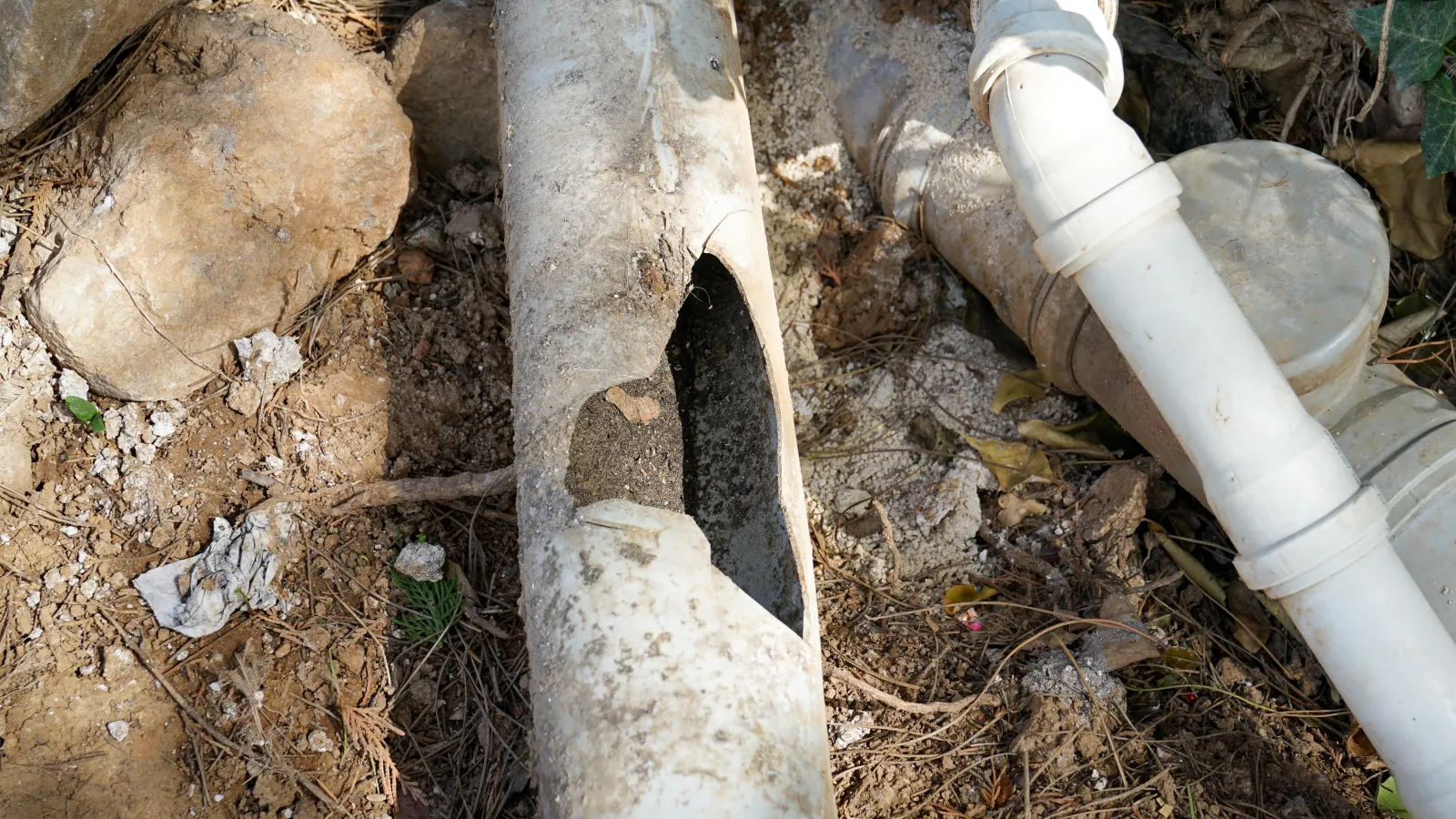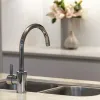Sewer line problems are super unfun.
If you’ve got a crack in your sewer line, you’ll need to address the problem as soon as possible. The longer you let it linger, the worse the crack will get.
It could even lead to a collapsed sewer line, which would be even more unfun.
In this piece, we’ll take a look at the best ways to address a cracked sewer line. But first, you’ll need to know whether the sewer line is cracked at all. It matters!
After all, not all sewer line mishaps involve cracked pipes. Sometimes, other issues can cause drainage and sewer problems.
Do you have a crack in your sewer line?
Or is something else going on? Other potential sewer line problems include the following:
- Clogs: If you’ve got sewer line issues–especially if you’re dealing with multiple clogged drains or sewage backup into your home–you might have a clog. It might not be a cracked pipe.
- Tree roots growing into the pipe: Ok, this problem does lead to a cracked sewer line. However, tree roots tend to grow all the way into the pipe and cause a clog. So a contractor wouldn’t necessarily fix the problem the same as with a pipe that has a small crack or leak.
- Bellied sewer line: Aging infrastructure and shifting soils can create a belly in your sewer line. This is a sagging area of pipe on which debris tends to catch and/or accumulate. In other words, it’s a magnet for clogs.
- Collapsed pipe: This happens when the sewer line totally caves in on itself due to age, damage, or tree roots. It’s what can happen if you don’t address a cracked sewer line soon enough.
So, how do you know whether you’ve got a cracked sewer line or one of these other problems?
The best way to find out is to have a drain and sewer specialist perform a sewer camera inspection. The inspection will reveal exactly what’s causing drainage problems in your home.
Speaking of drainage problems, how do you know you’ve got a sewer line issue anyway?
Signs and symptoms of a sewer line crack
To be sure, many of these signs and symptoms apply to all of the sewer line problems listed above. They can indicate a cracked sewer line or something else: a clog, a belly, tree root intrusion, etc.
This is why a sewer line camera inspection is so essential! It shows you exactly what’s going on, so your contractor can perform the most appropriate repair.
With that in mind, here are some of the most common signs of a crack in your sewer line:
- Gurgling noises from your drains: This often means wastewater isn’t draining properly. Noises are usually an early sign of sewer line issues, so be grateful if this is the only sign you experience.
- Bad smells from drains: This is particularly concerning if it smells like sewage and it’s coming from more than one drain.
- Multiple drains are backed up at the same time. This is a classic indicator of a sewer line issue of some sort.
- Lush areas in your yard: Sewage is a natural fertilizer. So if you see an unusually rich and vibrant patch of grass or landscaping and can’t explain why it looks the way it does, there’s a good chance your sewer line is cracked and leaking.
- Foundation problems: If there’s a cracked pipe under or near your house, the wet soil can cause foundation movement. The problem will show up in the form of foundation cracks or indoor issues like cracked drywall or caulk. While lots of things can cause foundation problems, leaking sewer pipes are one of them.
You might only experience one of these symptoms. Or you might experience all of them.
Regardless, the best next step–unless you can explain the problems some other way–is to have a plumber perform a sewer line camera inspection to see what’s going on.
Ways to fix cracks in your sewer line
There are basically two ways to fix a crack in the sewer line. The first is to patch up the crack. The second is to replace the section of damaged pipe.
Trenchless sewer line repair
First, let’s consider pipe patches, or trenchless sewer line repair. This is a minimally invasive way to seal up a crack in the sewer line. No excavation required!
Trenchless solutions work well for small cracks. It can keep the crack from expanding and causing more severe problems with the sewer line.
The process involves:
- Cleaning out the sewer line: We use sewer line hydro jetting to clear out any debris waste that has accumulated in the line or around the cracked section.
- Preparing the patch: The patch is made of fiberglass. We make sure it’s the right size for the pipe and the crack before sending it into the pipe.
- Applying the patch: We insert the patch into the line and apply it to the crack.
- Letting the patch cure: In most cases, the patch is totally cured within three hours.
After that, you can start running water again! You shouldn’t have any more issues with wastewater leaks and associated line blockages, backups, noises, or other annoyances.
Trenchless sewer line repair is what most people want, most of the time.
It’s roughly the same price as replacing a damaged pipe and there’s no digging required. It’s way less messy than the alternative!
And when the crack is in a section of a line that’s under a driveway or slab foundation, trenchless sewer line repair is always preferable.
Excavation and replacement
So, when would you not opt for trenchless sewer line repair? There are a few situations.
The first is when there’s a belly in the sewer line. Remember how we described a sewer line belly as a sagging section of pipe where debris can collect? Well, it’s usually not possible to use a trenchless method to repair a bellied sewer line.
The pipe just isn’t straight or flat enough to accommodate the patch. Plus, if there’s pooled wastewater in the belly (and the crack is also in the belly), we can’t apply the patch at all.
The other time you would choose pipe excavation and replacement is when the crack is too severe to accommodate a patch. When this is the case, it’s often possible to replace just the damaged section of pipe.
Of course, you may also want to replace the entire sewer line–especially if it’s an old cast iron, concrete, or Orangeburg line that’s subject to additional complications or failures.
Do you think you have a cracked sewer line? Here’s what to do.
If you think you have a cracked sewer line, the first thing to do is stop running water. The more wastewater you send down the sewer line, the worse the problem can get.
Next, call a plumber who specializes in sewer and drain services. At PV Heating, Cooling & Plumbing, we provide comprehensive drain and sewer services to homeowners all across Metro Atlanta!
Our team can perform a free sewer camera inspection to find out whether you’ve got a crack in the pipe or some other kind of problem. From there, we can determine the best course of action.
To learn more or book an appointment, contact us at (404) 798-9672 today! You can also schedule service online.





